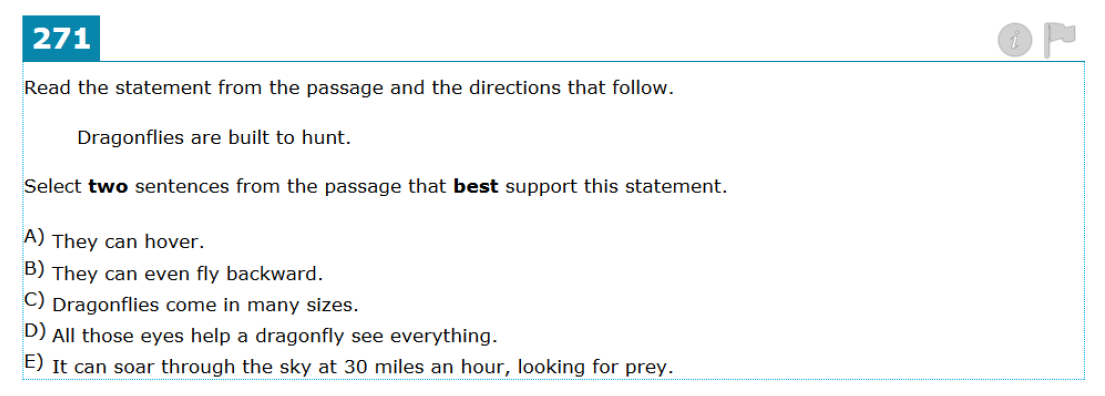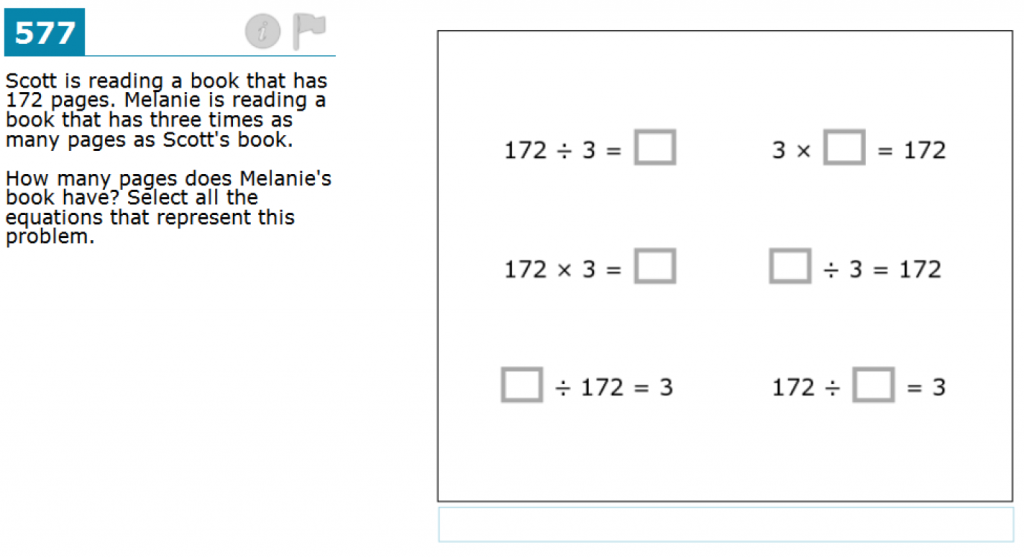Teachers throughout the country are preparing their students for the new Common Core Assessments. This does not mean they are teaching to the test; rather, it means they are evaluating what kinds of questions are being asked – and then deciding how to modify their lessons so the students are ready.
This is especially important because the released test questions, whether from test-developing group Smarter Balanced, or from PARCC (Partnership for Assessment for Readiness for College and Careers), are not your traditional multiple-choice, fill-in-the-blank questions.
Non-traditional trends
In our analysis of Common Core practice tests, DataWORKS found several non-traditional trends that teachers need to be aware of and consider in lesson design and delivery. Here are six new types of questions regularly seen on the assessments with test examples for each one: [If you’d like to see the full text for these questions, you can take the Smarter Balanced Practice Tests.]
Interpretive Questions
Questions typically don’t use word matches to locate answers; questions may use synonyms. So teachers need to help students develop a broad vocabulary and use context clues for meaning.
In sixth-grade ELA, a long passage about Libby’s graduation from dog training school is given to the students. Then they are asked to interpret the text:
Students are being asked to interpret the meaning of figurative language, not just identify it or categorize it. This is very non-traditional. Teachers will have to give students much more practice in interpreting figures of speech, and generally, the meaning of a variety of texts.
Evidence Questions
Questions ask for textual evidence. Often the question gives an inference or conclusion and then asks the student to determine where in the text it is indicated.
In third-grade ELA, a long passage about dragonflies is given to the students. They are then asked this question:
The students are given a conclusion that is not stated in the text, and then asked to find supporting evidence for it. To prepare, teachers will have to teach students to analyze text to determine whether it supports a main idea or conclusion.
Knowledge Questions
Informational text questions often use text from history, science, and technical subject classes. This is one way the literacy standards are incorporated.
In the eighth-grade ELA released test questions, students are given a long passage about elephants and how scientists are studying them. From this science passage, students are then asked to discuss ideas in text, not recall the facts.
Teachers will need to have students work with passages from informational text (science, history, etc.) and show them how to draw ideas from the text, consider point of view, and analyze each possible answer to determine why one is better than another.
Digital Questions
Computer-based testing is required. Students must be able to type answers and use the mouse to highlight, click, and drag.
A sixth-grade math question asks students to drag possible answers into the proper boxes to indicate which decimals are right for each scale.

The answer is 35.996 g, 36.004 g, and 36.102 g in the “Same Readings” column AND
36.011 g, 34.309 g, and 35.689 g in the “Different Readings” column
Teachers have to prepare students not only with how to use the mouse, but also how to answer an unusual rounding question that is set up in a word problem.
Conceptual Questions
Students are required to interact with ideas in text, not recall facts from text.
In a fifth-grade question, students are asked to look at how two characters interact in a passage. Then the students have to infer which statement would best describe the events from the second character’s point of view.
Teachers need to have taught the students about the concept of point of view, and give them practice in inferring ideas from text. Note that there are multiple answers required, not just one.
Application Questions
Real-world scenarios are often used to set up a problem which students then have to use concepts and skills they have learned in order to answer.
In fourth-grade math, students are given a question about multiplicative comparison – but it is done via a word problem. That is, the problem is set up in a real-world scenario so they have to apply what they have learned to a situation.
Note that there is more than one correct answer. This is another feature of the new tests. Students have to be prepared for multiple-answer questions.
As you can see from these sample questions, students are being required to think critically, give evidence from the text, and have good reading comprehension; these questions are a significant step up from the old traditional assessments. These Common Core questions are challenging, and they will require teachers to adapt their lessons to make sure students are familiar with these non-traditional questions.
For examples of great Common Core lessons, visit www.educeri.com. Educeri is our new lesson service with over 1,100 lessons and resources for K-12 educators.







